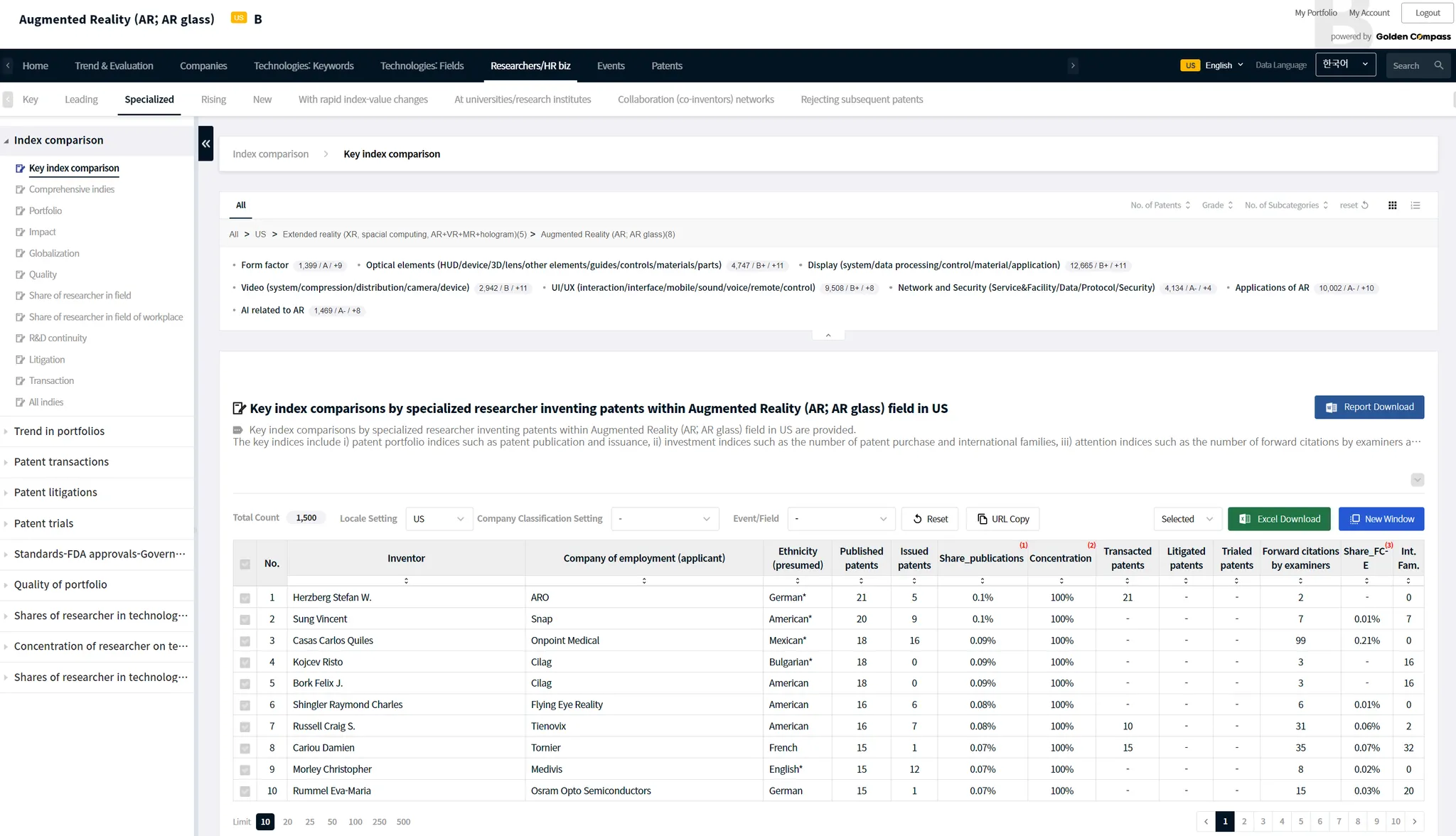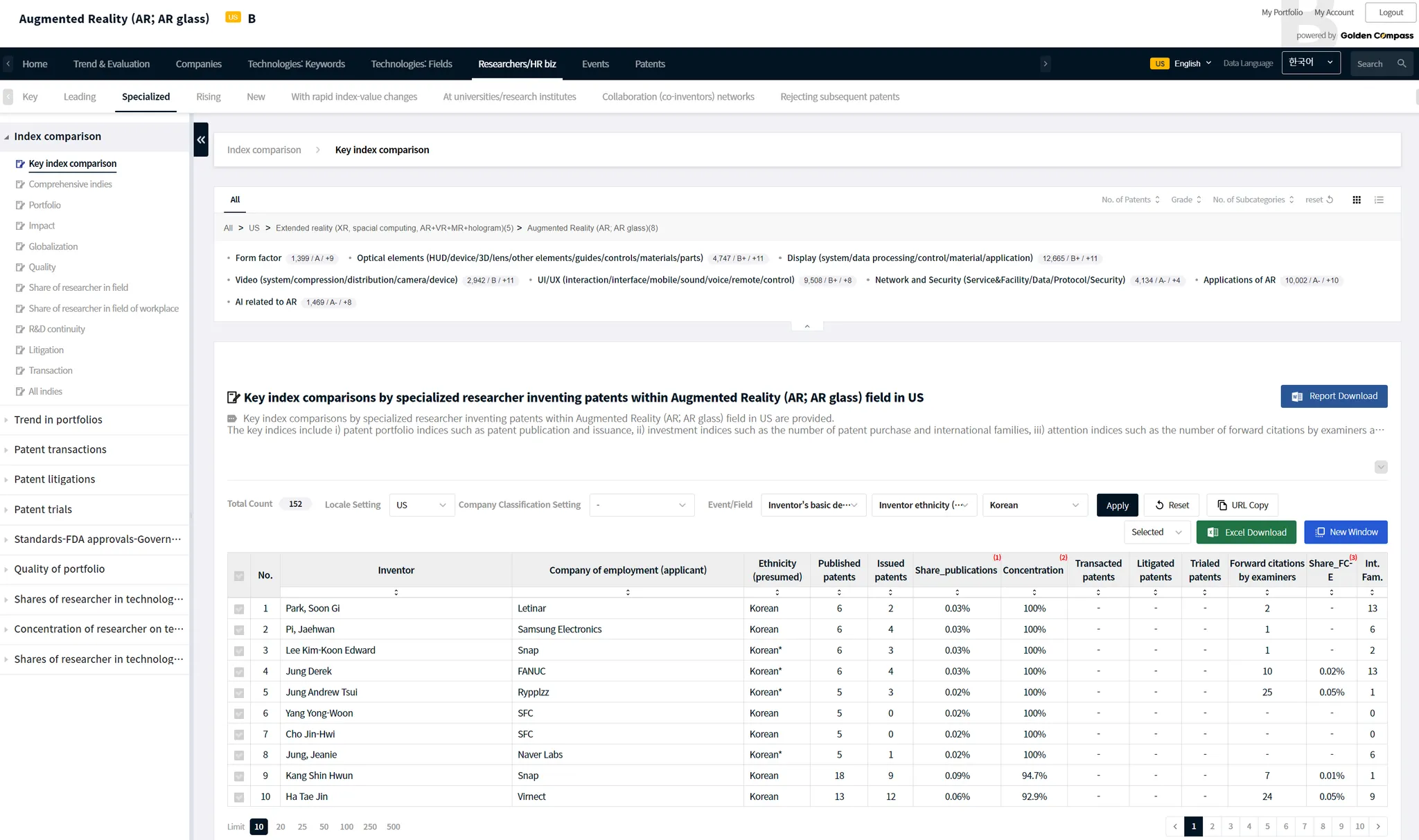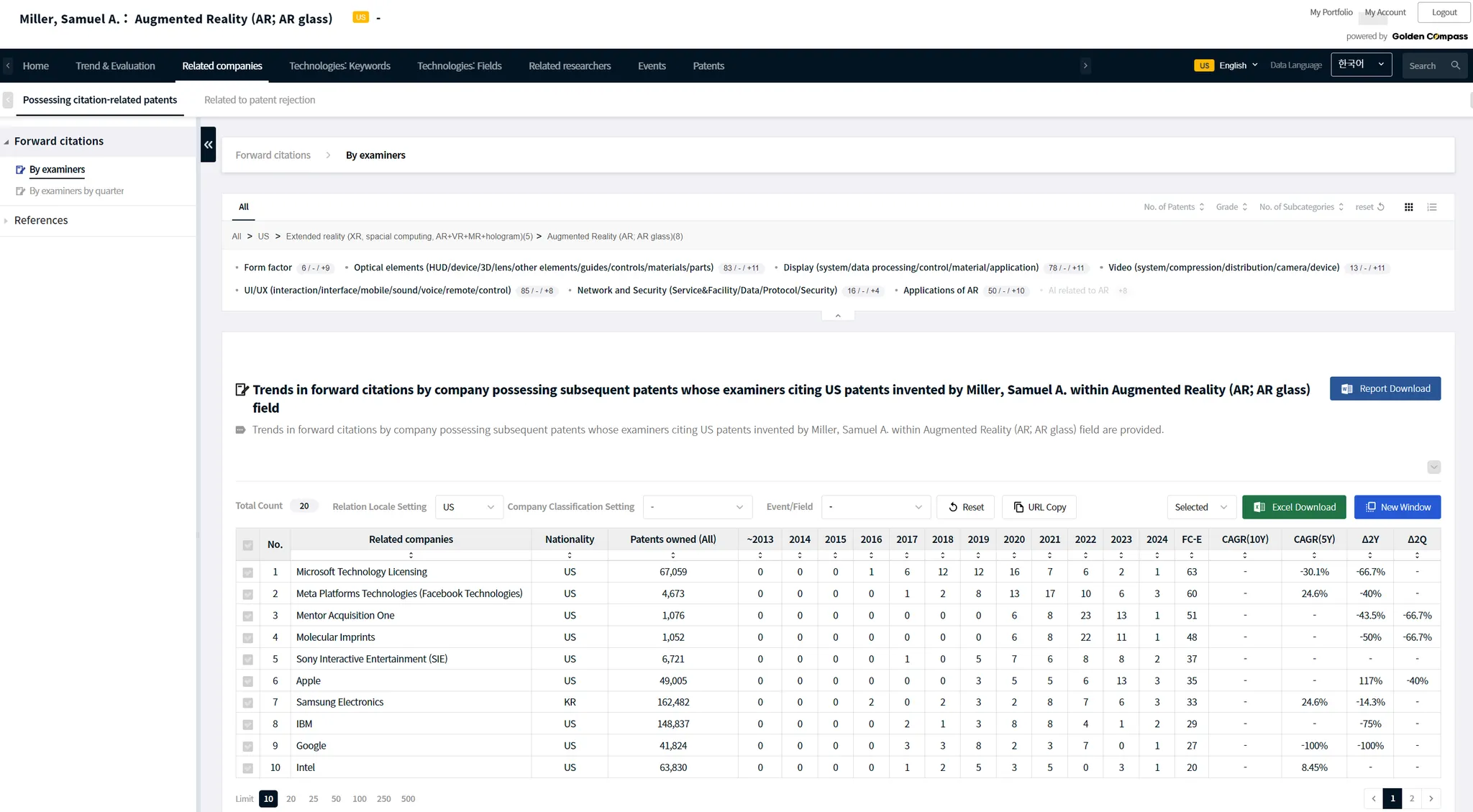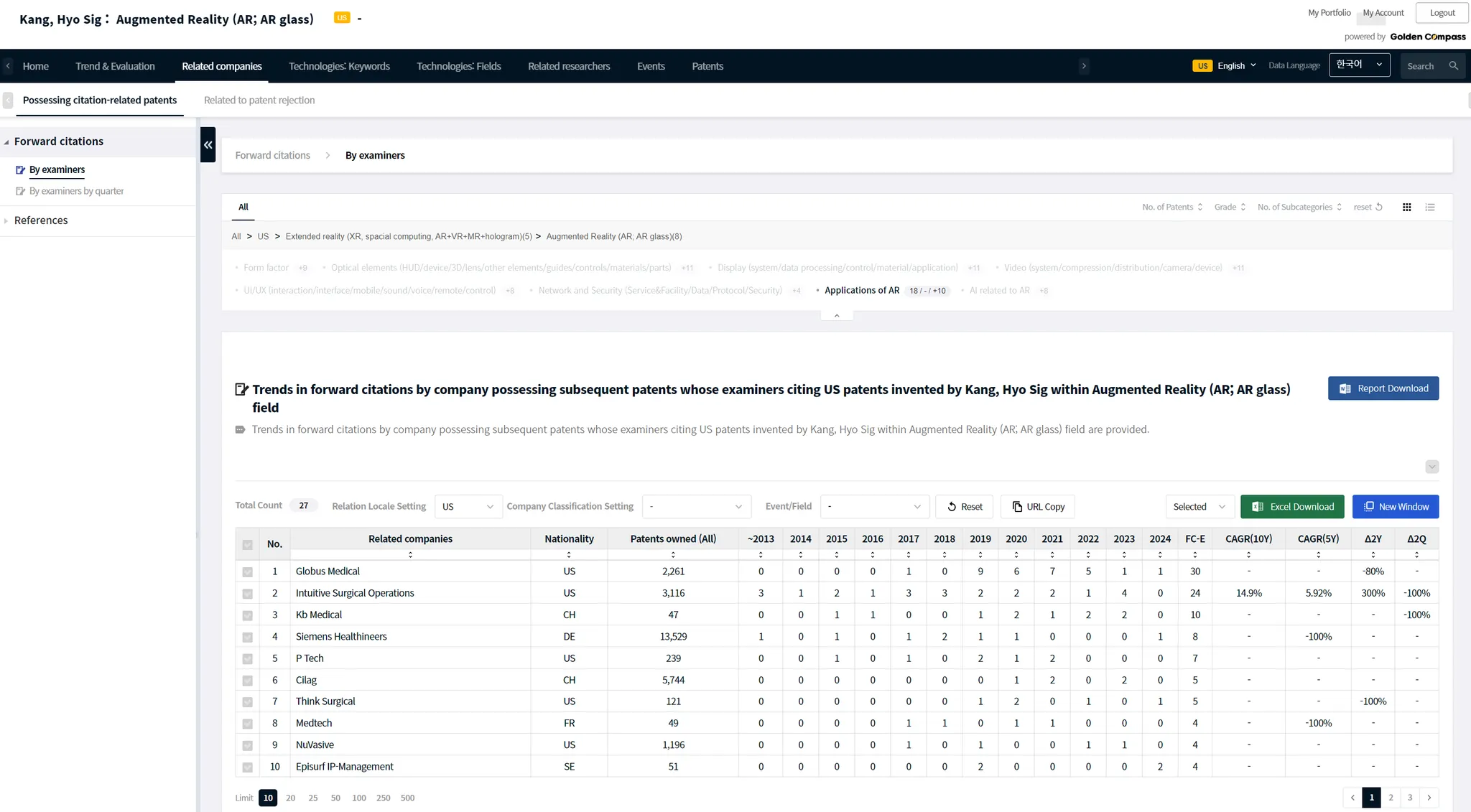HR-Recruiting Utilization Map
HR-Recruiting support data
Base data
GoldenCompass provides detailed evaluation, analysis, and comparison contents about researchers i) by technology field, ii) by company/organization, iii) by technology field of companies/organizations, and iv) by individual researchers.
The example below is data on researchers of United States nationality who invented patents in United States.
The example below is data on Researchers of Korean nationality who invented United States of America (US) patents.
Researchers classification data
On the other hand, we segment the researcher contents into i) key researchers, ii) leading researchers, iii) highly specialized researchers, iv) rising researchers, v) researchers rejecting subsequent patents a lot, vi) researchers at universities/research institutes, and so on.
Of course, we also provide a granularity of researchers who invented patents in Korea. For example, click on the links for contents on researchers who invented Korea patents who received many citations from (leading)researchers or researchers who rejected many subsequent patents.
Associated company data
GoldenCompass provides association data between {companies, researchers} vs. {companies, researchers}. The association relationships include i) citation-citation relationships, ii) patent rejection relationships, iii) co-application/inventing related patents, iv) patent transactions/litigations/trials, and v) M&A/investments.
The example below shows information about the companies/organizations with subsequent patents in possession citing invented patents of US patent inventor Miller, Samuel A.(from Magic Leap) in the field of augmented reality.
The example below is information about companies/organizations with subsequent patents in possession that cite invented patents by Korea patent inventor Kang, Hyo sig(from Mako Surgical) in the field of augmented reality.
HR-Recruiting
GoldenCompass provides services for HR-Recruiting in various forms: i) as a web UI, ii) as an API, and iii) as bulk data.
HR tech companies
Utilizing data through APIs
Through APIs, HR tech companies will be able to combine data services such as i) technology input → researcher list data output, ii) individual researchers input → researcher-specific analysis data output, etc. into their platform/service. It can also be used to develop R&D talent sourcing and verification services specialized in technology fields.
Linking and integrating your own DB and researchers' data
Through bulk data, you can link or integrate your own DB and researchers' data, which can be effectively utilized for sourcing, evaluation, and recommendation of technology talent for your clients.
Researchers DB mining/AI Service
By mining bulk data, you can derive business insights that are specific to your company or clients.
Meanwhile, you can also develop holistic, interactive AI services that are specialized for researchers. For an example of a conversational AI service, see patentpiagpt.patentpia.com.You can query patentpiagpt.patentpia.com with setence of ‘Find me researchers specialized in the field of quantum cryptography’.
HR companies
Systematic technology talent recommendations for client companies
By utilizing patent/paper data, which is objective data from the technology world, we can generate systematic and convincing recommendation rationale data and comparison analysis data for recommended talents, and provide them to client companies. By doing so, you can demonstrate the value of your recommended talent and increase the ransom price of your talent.
Objective, data-driven recommendations to companies for technology talents
For each technical talent, you can easily discover domestic and foreign companies that are highly dependent/related to that technical talent or that technical talent's specific technology field. Dependency/relevance can be measured by i) high or rapidly growing forward citations, and ii) high or rapidly growing rejecting subsequent patents.
For a given technology field, i) companies increasing technology investments, ii) companies in patent distress can be discovered with just one click. For a given technology field, companies increasing technology investments can be measured by i) rapidly growing companies in the technology field, ii) patent purchase/licensing companies, iii) increasing No. of purchased patents, iv) increasing No. of self-rejections. Companies in distress include i) companies that have been litigated as plaintiffs, ii) companies that have filed or lost trials as petitioners.



